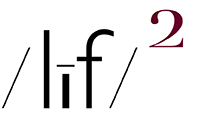(embiggenable) • iPhone
(embiggenable) • iPhone
(embiggenable) • iPhone
AT THE START OF MY BLOGGING DAYS, and continuing throughout, I always considered part of my blogging mandate-albeit self-imposed-to be to identify and present an exposé of fuzzy-headed notions, re; the medium of photography and its apparatus. Notions / ideas such as...
There are writers on the web who insist that your work will improve if you (doggedly) use one camera and one lens for an entire year but I don't think that's based on anything more than some people being really, really slow learners; or too lazy to try new stuff. I never thought about the damage caused by self-limiting your choices when making art....
So, mandate accepted, here I go again....if there is a "slow learner" at work here, it is the picture maker who issued forth this rather dubious stupid idea. That written, one should expect nothing less from this source inasmuch as this picture maker has not exhibited a single iota of the vision thing in his/her picture making. A situation which, again, should not be a surprise inasmuch as this picture maker is-WARNING: massive understatement-gear obsessed.
That written, here's the thing about the "1 camera / 1 lens" idea. The point of such an exercise-and I am not endorsing / refuting it, per se-is that, if one is looking to identify and refine one's vision, then one is best served by concentrating on: a.) what it is one is trying to accomplish with one's art making, and b) learning how to see rather than to just look. Arguably, one could accomplish both objectives without the use of a camera.
In actual pactice, most picture makers use a camera as part of their search for their vision. However, the idea of walking around with several camera bodies and a bevy of lenses, iMo, only complicates the matter at hand. In a very real sense, it puts the wagon in front of the horse inasmuch as, once one has decided what one is trying to accomplish with one's art (the "horse' that pulls the wagon), then that is the time to decide what kind of wagon is best suited for hitching to the horse.
And, here's a fact-ignore it at your peril-if one's intent is to make fine art in the photography world...consistancy of vision is paramount. You can take it to the bank that 99% of sucessful fine art photographers are practioners of and have mastered the 1-camera / 1 lens concept.
Their work exhibits, not only a consistent vision, but also a consistent technique. A single body of work does not exhibit the use of a wide angle lens in one picture and the use of a telephoto lens in another. One picture is not done in BW and another in screaming HDR color. And, in many cases, all of the pictures in a single body of work are presented in exactly the same print format (square, rectangle, horizontal, vertical, et al).
All of that written, here's my biggest irk....the idea that using 1 camera / 1 lens indicates that a picture maker is "too lazy to try new stuff." That idea implies that "new stuff" is only driven by "new technique", aka: the use of different gear. To which I write, "hogwash" cuz truly "new stuff" is not gear driven, it is driven by a picture maker's imagination.
Consider this from Robert Henri from his book, THE ART SPIRIT. iMo, the best book ever written for aspiring artists of any medium:
The technique of a little individuality will be a little technique, however scrupulously elaborated it may be. However long studied it will still be a little technique; the measure of the man. The greatness of art depends absolutely on the greatness of the artist's individuality and on the same source depends the power to acquire a technique sufficient for expression.
The man who is forever acquiring technique with the idea that sometime he may have something to express, will never have the technique of the thing he wishes to express.
Intellect should be used as a tool.
The technique learned without a purpose is a formula which when used, knocks the life out of any idea to which it is applied.
